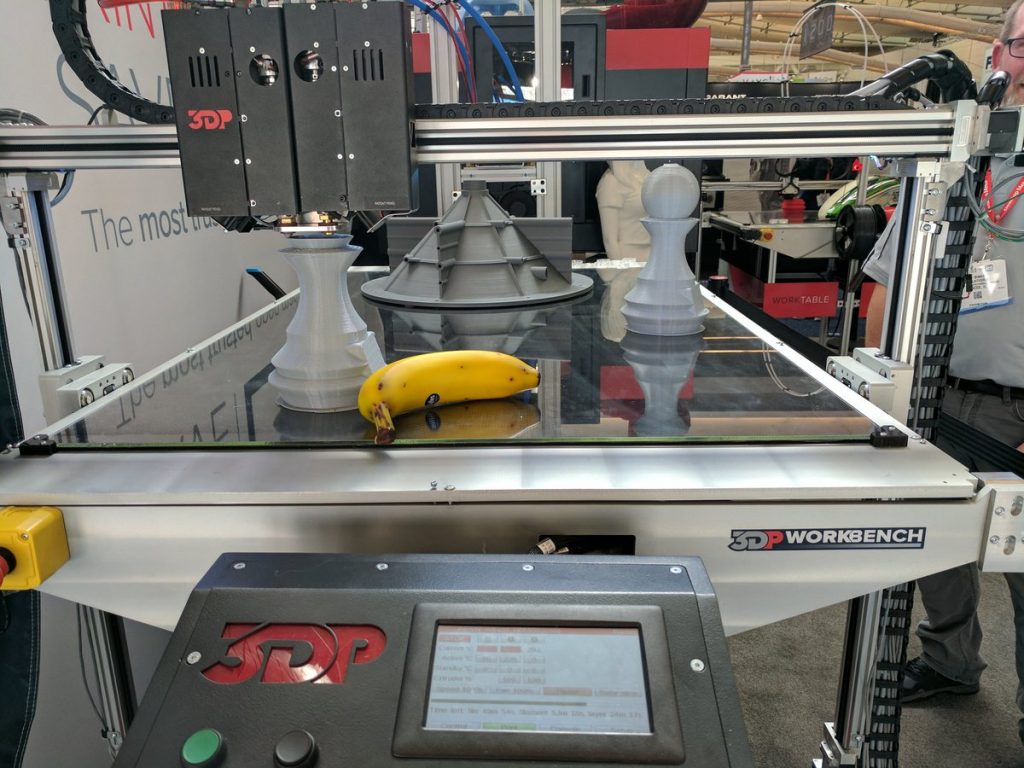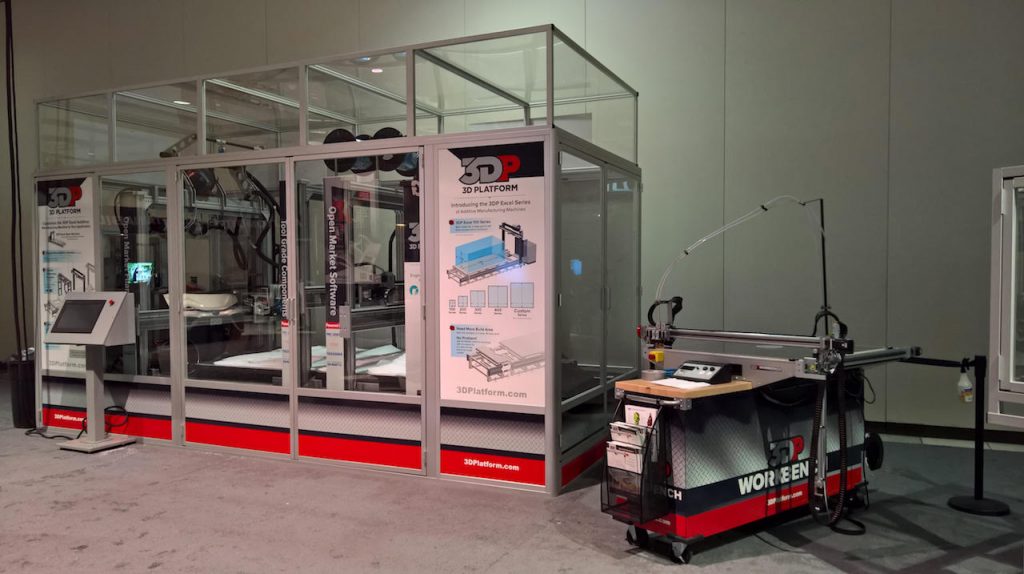This is a guest post in our series looking at the future of 3D Printing. To celebrate 5 years of reporting on the 3D printing industry, we’ve invited industry leaders and 3D printing experts to give us their perspective and predictions for the next 5 years and insight into trends in additive manufacturing.
Jonathan Schroeder is the President of 3D Platform, a manufacturer of large-scale, industrial-class 3D printers. 3D Platform’s product range includes the WorkBench, and the Excel big area additive manufacturing machine.
3D Printing: the next 5 years by Jonathan Schroeder, President of 3D Platform
Over the next five years, we are going to see more printing being done for production and manufacturing. It’s going to start (and has already started) within the industries that can afford material premiums over traditional manufacturing because of the weight, efficiency, and design savings. We’ll then start to see manufacturing use 3D printing for production—primarily for low-volume prototyping or replacement parts for retired products.
We’ll also see more growth opportunities in sectors where personalization is important, such as medical and dental. Mature medical imaging technology will play a role in this growth, and a hybrid with newer 3D object scanning will emerge.

Materials
We see advancements happening in materials now, and can expect these to continue over the next five years. More materials will be developed and modified in such a way that they provide similar characteristics to traditional materials, but they will be manufacturable using additive methods; for example, FFF used to just be plastic. Someone then found a way to infuse copper and bronze, and when you sinter it you are left with a copper or bronze part.
In the last few months, BASF, a German chemical company, has introduced a stainless steel infused filament. Once you sinter it, you’re left with a stainless-steel part.
I don’t believe AM will ever fully replace traditional manufacturing, because the additive process is slower than traditional processes, such as die casting or injection molding. Also, the cost of AM materials versus the cost of materials in a solid brick or natural form can be more expensive. In some instances, injection molding will be the better choice due to its efficiency and cost effectiveness. In other instances, additive does provide more options and flexibility to designers and engineers.
The possibilities are endless
The possibilities for additive over the next five years are endless. It’s exciting to see how AM is literally changing the world for many people; for example, the medical advances of AM are making life altering changes and improving areas of surgery, orthotics, and rehabilitation—dramatically improving the quality of life.
In my opinion, AM is a technology that truly transcends all industries. In the past, new technology that came out only affected a single industry, or possibly a few. With AM, you have sections of it that are better suited for certain applications and industries versus others; for example, FFF is more suited for extremely large parts, while SLA is better for tiny intricate parts.

Challenges to design for additive manufacturing
While AM is gaining in popularity, it does face two challenges over the next five years. The major challenge is this whole concept of design for AM. For the last 50 years, as engineers have gone through school and have received subsequent training on the concept of design for manufacturing. When I was in college, I had a two-and-a-half-inch-thick textbook on all different types of engineering processes. It had information on casting, stamping, spinning, forging, swaging; turning on a lathe and machining on a mill; grinding, broaching, waterjet cutting, EDMing, centerless grinding, etc. – every traditional manufacturing process out there was touched on in this book.
An educational concern
The thing about AM that concerns me and keeps me up at night is the lack of formal education currently available on the market to both current and future generations of engineers, as, well as their supervisors. They still are not understanding AM as a manufacturing process.
When it comes to certain traditional manufacturing processes, each process has its own set of rules; for example, sand casting, versus die casting, versus investment casting – each one of these casting processes has its own set of guidelines that need to be followed. In each process, the draft angles, locations of gates, runners, and sprues is different from one process to the next. Similarly, in AM the rules change between the different processes; for example, the guidelines for FDM are not that same for SLA, SLS, or any of the other processes.
Over the next 5 years we need to work on better understanding AM and providing education to the marketplace.
The important distinction of 3D printing
Also, running additive equipment is a skill and discipline, which leads to my next concern. Here at 3D Platform, we continually see companies who have purchased new equipment or a 3D printer, install it, then give their employees no time to learn how to use it. There is no training involved and that is a recipe for disaster. Whether you are a manufacturing company or a design firm, the appropriate amount of training should always be part of the purchase plan and budget.

In my opinion, one of the worst things that has happened within the industry is the coining of the term “3D printer.” People immediately associate the AM process to a computer printing process. Prints that come off a computer printer take a matter of seconds to print, from typing something up, sending the file to the printer and hitting the “print” button. When you get to the printer, your document is ready for you. With AM, it’s not that easy nor is it near as fast. We are working in this direction…but it’s not there yet.
This is a guest post in our series looking at the future of 3D Printing, if you’d like to participate in this series then contact us for more information. For more insights into the 3D printing industry, sign up to our newsletter and follow our active social media channels. Let us know your thoughts about this perspective on the future of 3D printing in the comments below.
More information about 3D Platform is available here.
#futureof3Dprinting
Featured image: Jonathan Schroeder, President of 3D Platform. Photo via Meaghan Ziemba


